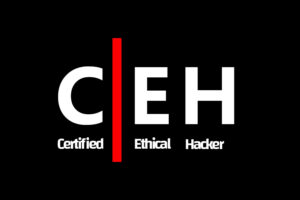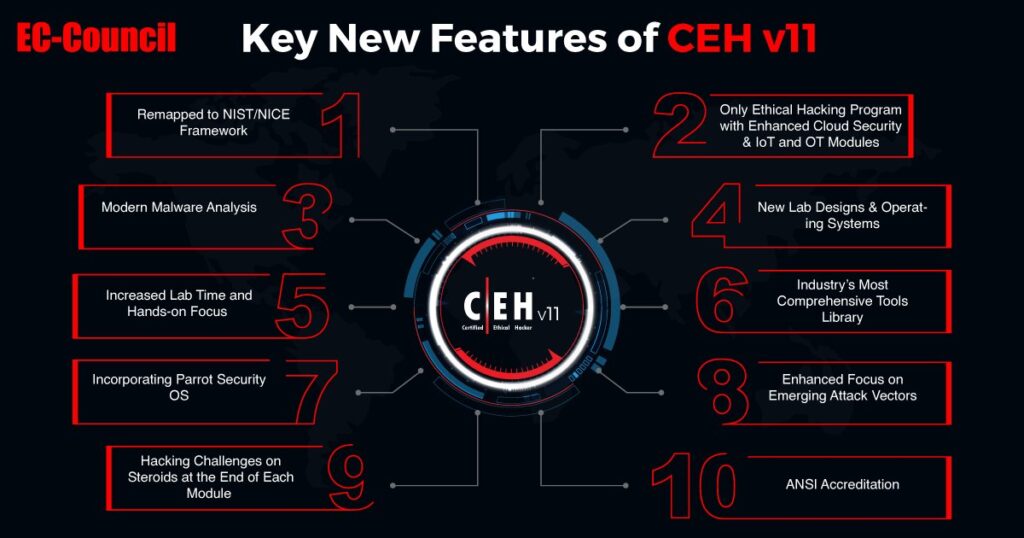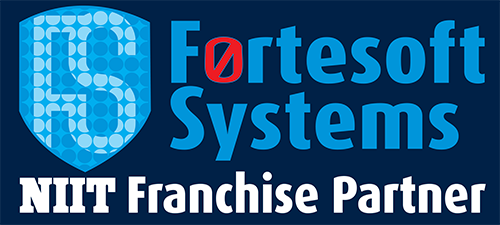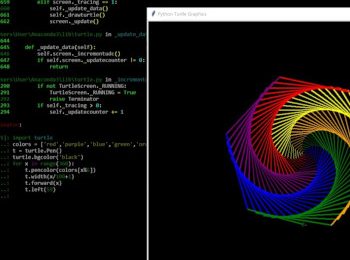




World's No.1 Ethical Hacking Certification
Digital Fortress CEH certification training course provides you the hands-on training required to master the techniques hackers use to penetrate network systems and fortify your system against it. This ethical hacking course is aligned with the latest CEH v11 by EC-Council and will adequately prepare you to increase your blue team skills.
Certified Ethical Hacker CEH v11 will teach you the latest commercial-grade hacking tools, techniques, and methodologies used by hackers and information security professionals to lawfully hack an organization.

WHY DIGITAL FORTRESS
Training: 100% Hand on Practical
Global Recognized Certification by EC Council
International Job Opportunities
COURSE OVERVIEW
As cybercriminals continue to apply more pressure on the networks and systems they attack, the demand for skilled IT security professionals to fight back and devise robust defensive strategies is on the increase. The Ethical hacking Essentials course is aimed at equipping prospective cyber professionals with the principles, practices and fundamental concepts of ethical hacking, information security, and cyber attacks. At the end of the course , you will learn:
- Information security laws and standards
- Fundamentals of ethical hacking
- Information security threats and vulnerabilities
- Different types of password cracking techniques and countermeasures
- Social engineering techniques, insider threats, identity theft, and countermeasures
- Network level attacks and countermeasures
- Application level attacks
- Mobile platform attack vector, mobile device management, mobile security
- guidelines, and security tool
- IoT and OT concepts, attacks, and countermeasures
You will be issued EC council’s Certified Ethical Hacker Certification having completed this course and passed the certification test . You will be equipped with both the principles and practices to function as an ethical hacker or cyber security professional in various private, security and governmental organizations.
Course Outline
- Understanding the Need for Security
- Understanding the Elements of Information Security
- Understanding the Security, Functionality, and Usability Triangle
- Understanding Motives, Goals, and Objectives of Information Security Attacks
- Overview of Classification of Attacks
- Overview of Information Security Attack Vectors
- Understanding the Cyber Kill Chain Methodology
- Understanding Tactics, Techniques, and Procedures (TTPs)
- Overview of Indicators of Compromise ( IoCs
- Overview of Hacking Concepts and Hacker Classes
- Understanding Different Phases of Hacking Cycle
- Understanding Ethical Hacking Concepts and Its Scope
- Overview of Ethical Hacking Tools
- Understanding the Threat and Threat Sources
- Understanding Malware and Components of Malware
- Overview of Common Techniques Attackers use to Distribute Malware on the Web
- Overview of Different Types of Malware and Malware Countermeasures
- Understanding Vulnerability and Vulnerability Classification
- Understanding Vulnerability Assessment and Types of Vulnerability Assessment
- Overview of Vulnerability Scoring Systems and Vulnerability Management Life Cycle
- Understanding Vulnerability Assessment Tools and Vulnerability Exploitation
- Understanding the Password Cracking and Password Complexity
- Understanding Microsoft Authentication
- Understanding Various Types of Password Attacks
- Overview of Password Cracking Tools
- Understanding Countermeasures against Password Attacks
- Understanding Social Engineering Concepts
- Understanding Various Social Engineering Techniques
- Understanding Insider Threats
- Understanding Different Social Engineering Countermeasures
- Understanding Different Insider Threats and Identity Theft Countermeasures
- Network Level Attacks and Countermeasures
- Overview of Different Types of DoS and DDoS Attacks
- Understanding Different DoS/DDoS Attack ToolsU
- Understanding Different DoS/DDoS Attack Countermeasures and Protection Tools
- Overview of Session Hijacking and Types of Session Hijacking
- Understanding Different Session Hijacking Tools and Countermeasures
- Understanding Web Server Concepts and Attacks
- Understanding Different Web Server Attack Tools and Countermeasures
- Overview of Web Application Architecture and Vulnerability Stack
- Understanding Different Web Application Threats and Attacks
- Understanding Different Web Application Attack Tools and Countermeasures
- Overview of Different Types of SQL Injection Attacks
- Understanding Different SQL Injection Tools
- Understanding Different SQL Injection Attack Countermeasures
- Wireless Attacks and Countermeasures
- Wireless Attacks and Countermeasures
- Understanding Wireless Network–Specific Attack Techniques
- Overview of Different Wireless Attack Tools
- Understanding Bluetooth Attack Techniques
- Understanding Bluetooth Attack Techniques
- Overview of Different Wireless Security Tools
- Understanding Anatomy of a Mobile Attack
- Understanding Anatomy of a Mobile
- Understanding Anatomy of a Mobile Attack
- Understanding Mobile Device Management
- Overview of Mobile Security Guidelines and Security Tools
- Understanding IoT Concepts
- Understanding IoT attacks and IoT attack Tools
- Overview of IoT Attack Countermeasures and Security Tools
- Understanding OT Concepts
- Understanding OT Attacks and OT Attack Tools
- Overview of OT Attack Countermeasures and Security Tools
- Understanding Cloud Computing Concepts
- Understanding Cloud Computing Concepts
- Understanding Cloud Computing Threats
- Overview of Cloud Attacks and Tools
- Understanding Cloud Attack Countermeasures
- Overview of Various Cloud Computing Security Tools
- Penetration Testing Fundamentals
- Understanding Types of Penetration Testing
- Understanding Phases of Penetration Testing
- Overview of Penetration Testing Methodologies
- Overview of Guidelines and Recommendations for Penetration Testing
- Understanding Risks Associated with Penetration Testing





























